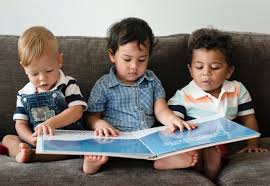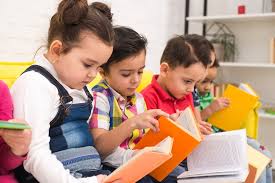Introduction and Importance in Facilitating Creativity
Language and literacy are crucial for fostering creativity in young children. Through storytelling, reading, and writing, children develop the ability to express their thoughts and ideas. These activities build a foundation for communication and imaginative thinking. Early literacy experiences, such as engaging with books and creating stories, allow children to explore their imagination while improving cognitive skills. In early childhood education, fostering creativity through language helps children develop problem-solving abilities, enhances their emotional expression, and lays the groundwork for later academic success (Puranik & Lonigan, 2020).
Creativity Theories and Perspectives
Creativity in language and literacy can be explained through Vygotsky’s sociocultural theory and Bruner’s concept of narrative. Vygotsky emphasizes that social interactions support creativity, and in language and literacy, collaboration enhances children’s creative thinking. Bruner’s work on narrative suggests that storytelling is a key tool for structuring children’s knowledge. Additionally, Gardner’s theory of multiple intelligences highlights linguistic intelligence, demonstrating how creativity can be expressed through language. These theories suggest that creativity is developed through social exchange, guided exploration, and the active construction of meaning (Vygotsky, 2020; Gardner, 2011).

Resources, Materials, and Digital Technologies
To nurture creativity in language and literacy, educators can use books, storytelling props, and puppets. Interactive apps like Toontastic and Storybird allow children to create their own stories through animation and simple writing tools. Digital resources like Epic! offer vast libraries of e-books, engaging children with stories in diverse formats. Educators can also incorporate voice recorders or simple video equipment for children to document and share their own stories. These tools help children expand their vocabulary, improve literacy skills, and express their creativity in a variety of ways (O’Neill & McDonagh, 2020).
Learning Experiences (One per Age Group)
0–2 years: Educator sings repetitive nursery rhymes, encouraging infants to imitate sounds and gestures, fostering early language and motor skills (Berk, 2021).
2–3 years: Children use picture cards to create simple stories, building vocabulary and narrative skills (Puranik & Lonigan, 2020).
3–5 years: Children act out familiar stories using props and costumes, supporting creativity, memory, and language development (Whitebread & Coltman, 2021).
6–8 years: Children write and perform their own short stories, incorporating illustrations, promoting creativity and language skills (Howard & Mayesky, 2022).
Critical Reflection and Evaluation
Reflecting on the language and literacy activities, the picture storytelling for toddlers (2–3 years) was a great success in engaging children with language and promoting creative thinking. However, some children struggled to create coherent stories. To improve, I would provide more prompts or help children sequence their pictures to guide the storytelling process. The collaborative story creation for children aged 6–8 was also effective, as it promoted creativity and teamwork. However, some children were initially hesitant to contribute ideas. In the future, I would include ice-breaking activities to build confidence and encourage active participation. I would also ensure each child has equal opportunity to contribute to the story, allowing for a more inclusive creative process.

